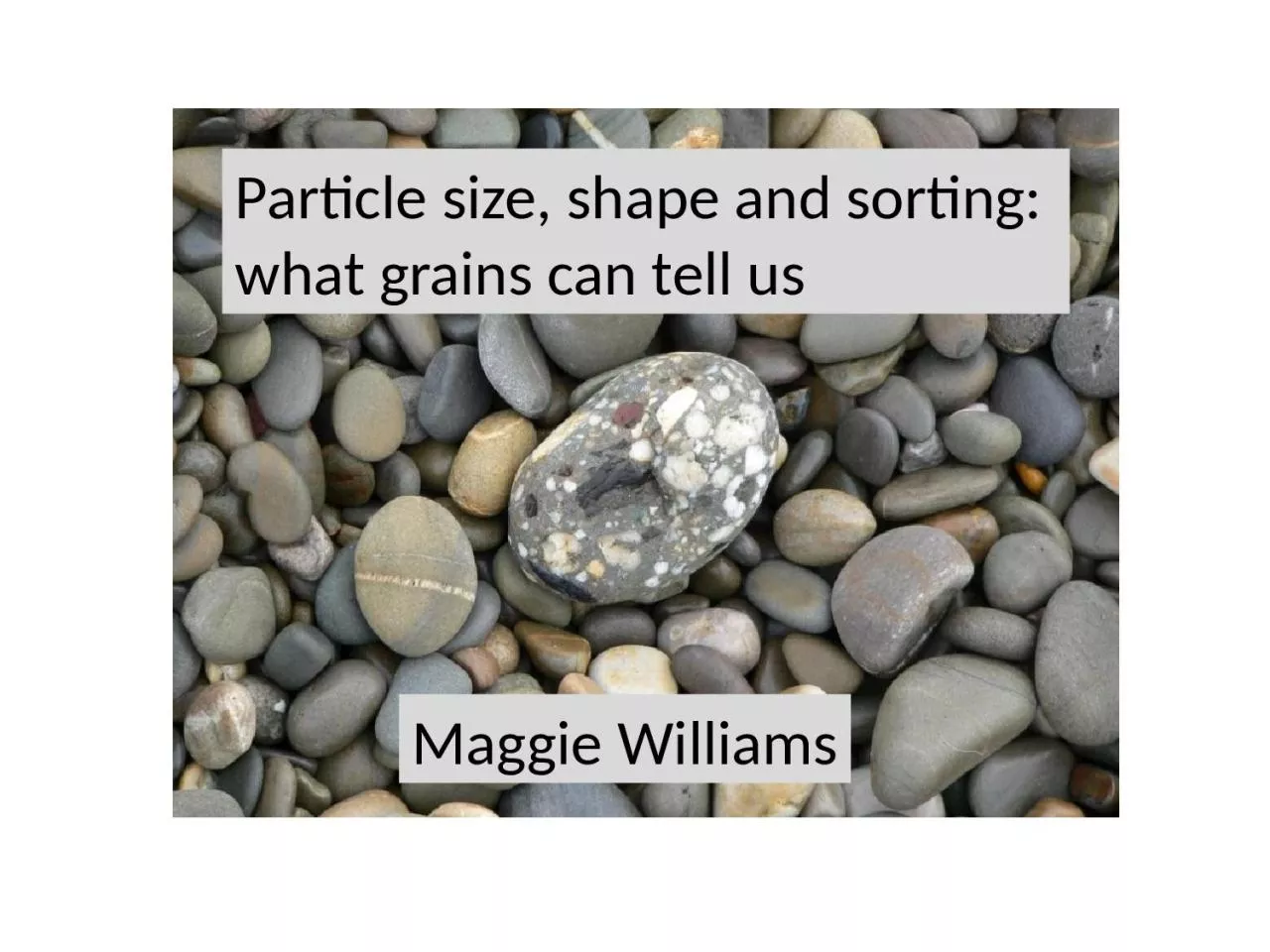

what grains can tell us Most sediments contain particles that have a range of sizes so the mean or average grain size is used in description Mean grain size of loose sediments is measured by size analysis using sieves ID: 1022592
Download Presentation The PPT/PDF document "Maggie Williams Particle size, shape and..." is the property of its rightful owner. Permission is granted to download and print the materials on this web site for personal, non-commercial use only, and to display it on your personal computer provided you do not modify the materials and that you retain all copyright notices contained in the materials. By downloading content from our website, you accept the terms of this agreement.
1. Maggie WilliamsParticle size, shape and sorting: what grains can tell us
2. Most sediments contain particles that have a range of sizes, so the mean or average grain size is used in description.Mean grain size of loose sediments is measured by size analysis using sieves
3. >2mm Coarse grain size (Granules<pebble<cobbles<boulders)0.06 to 2mm Medium grain size Sand: very coarse-coarse-medium-fine-very fine)<0.06mm Fine grain size (Clay<silt) Difficult to seeRemember that for sediment sizes > fine sand, the coarser the materialthe greater the flow velocity needed to erode, transport & deposit the grainsGrain size
4.
5. What does this tell you?If grains are the same size this tells you that the sediment was sorted out during longer transportation (perhaps moved a long distance by a river or for along time by the sea.If grains are of different sizes the sediment was probably deposited close to itssource or deposited quickly (e.g. by a flood or from meltwater).Are the grains the same size of different?
6. Depositional environments
7. Environment 1
8. Environment 2Environment 3
9. Environment 4
10. Environment 5
11. Environment 6
12. Sediment size frequency plots from different depositional environmentsWhen loose sediment collected from a sedimentary environment is washed and then sieved it is possible to measure the grain sizes in the sediment accurately.The grain size distribution may then be plotted as a histogram or as a cumulative frequency curve.Sediments from different depositional environments give different sediment size frequency plots.This shows the grain size distribution for a river sand. This sand is described as fairly well sorted.
13. What is sorting?Very well-sorted sediments - grains all the same size Very poorly-sorted sediments - grains with a wide range of sizesWhat does sorting tell you?Generally, sediment sorting improves along the sediment transport path.Poorly sorted sediments were usually deposited quickly (e.g. in storm beds or from flows/mudflows. Better sorted sediments may have been reworked by wind or water. (e.g. Sand deposits on beaches, in shallow seas or in deserts)Grain sorting
14. Studying sedimentary rocks
15. Mean grain size and sorting - more difficult to analyse in consolidated sedimentary rocks
16. Grain shape What does high or low sphericity tell you?Not much! Sphericity of grains mainly depends on the physical properties ofthe source material. (Sphericity is little changed by transport)What does the degree of rounding tell you?Generally – the more rounded the grains are the more they have been moved around (i.e. the longer the length of time or distance they have moved). Angular grains cannot have travelled far.
17. 1. For each of the following four rocks:describe the grain size and sorting of the grains,name the rock.
18. Rock A
19. Detail of rock A
20. Rock B
21. Detail of rock B
22. Rock C
23. Detail of rock C
24. Rock D
25. Detail of rock D
26. 2. For each of the following sediments describe the :grain size,grain sorting,rounding of the grains.
27.
28.
29.
30.
31. Sample 2, Towy
32. Sample 10, Flamborough Head
33. 3. Which of the following sediment samples contains:only quartz grains, mostly rock fragments (lithic grains)mostly skeletal remains?
34.
35.
36.
37. 4. For the following four slides answer the question given on each slide.
38. This sediment was collected from the beach at Vik, Island. What evidence does it show that has been reworked by water?Sample 1
39. This sediment was collected on the banks of the River Severn in Shropshire. What evidence does it show that it was not transported a long distance?
40. Which of these two sediment samplesshows evidence that it was probablydeposited as a glacial outwash deposit?Give reasons for your answer.
41. Which of these two sedimentsamples was most likely to have beendeposited as a wind-blown beach sand? Give a reason for your answer.Sample 7, Broadhaven